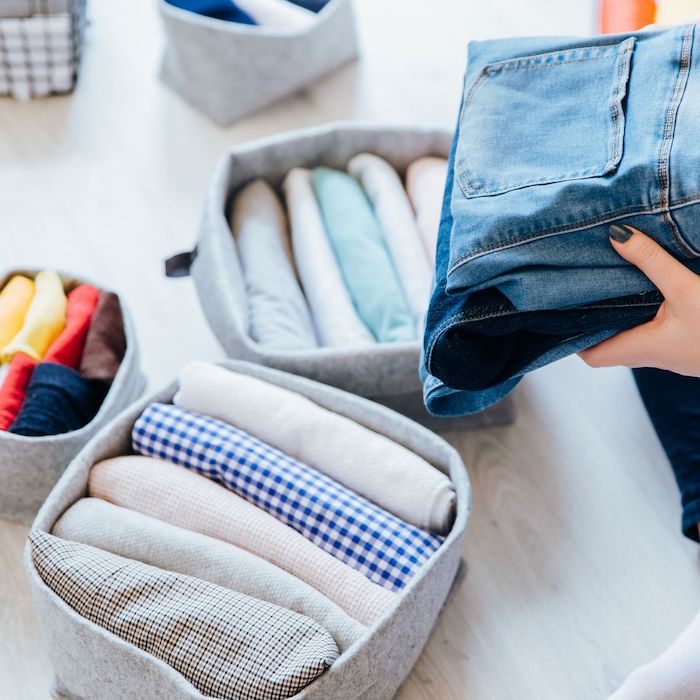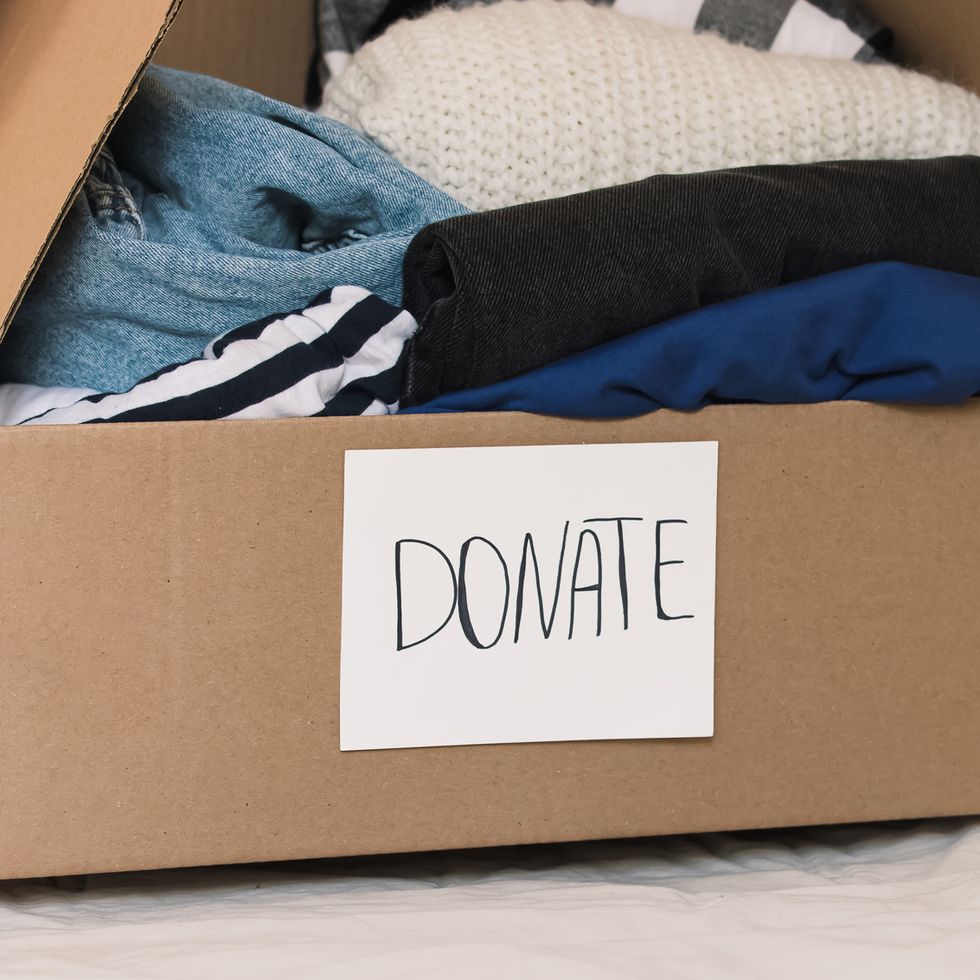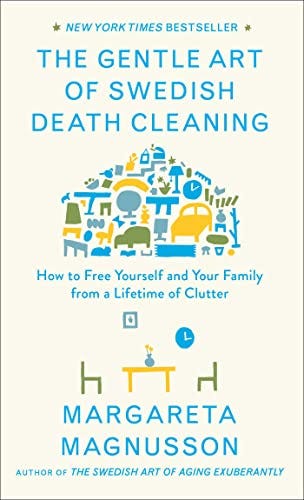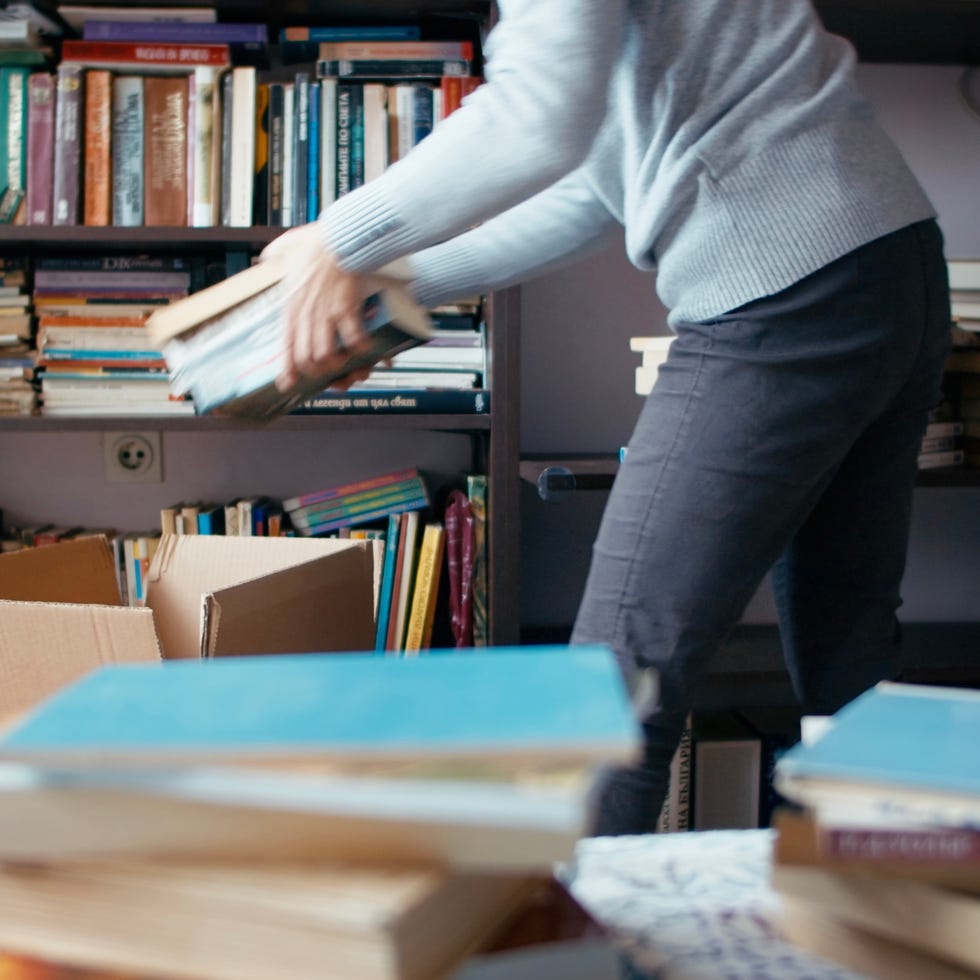— How the Method Can Help You Declutter

There’s no shortage of home decluttering methods — take Marie Kondo’s popular minimalist approach, the KonMari Method, for example. But when it comes to downsizing your belongings, including furniture, clothing, shoes, kitchen essentials and even documents, to prepare for your older years, Swedish death cleaning is an approach that’s worth considering.
Swedish death cleaning is a well-known concept in Swedish and Scandinavian culture, where you work on eliminating unnecessary items from your home, so loved ones won’t be burdened with the task after you pass.
The thorough organizing method involves editing everything from furniture and clothing to the ever-growing piles of documents that’s been difficult to control over time. It’s a slow process that’s been all the rage lately, thanks to Peacock’s new show, The Gentle Art of Swedish Death Cleaning, which is produced by Amy Poehler. While Swedish death cleaning is all about holding onto essential belongings, pinpointing the items you want to keep and part ways with isn’t an easy process.
So, follow the checklist below to get started and decide whether this buzzy cleaning method is right for you.
Swedish death cleaning checklist and steps

In 2017, Swedish author Margareta Magnusson coined the term in her New York Times best-selling book, The Gentle Art of Swedish Death Cleaning: How to Free Yourself and Your Family from a Lifetime of Clutter. In her guide, she urges those 65 and up to partake in the task, though it never hurts to begin earlier, especially since decluttering is a great stress reliever.
When starting, focus on areas you may find the easiest to tackle. According to Magnusson’s book, the attic or basement may be best since they are more likely to have unnecessary excess items, like broken seasonal decorations. Choose belongings you don’t have emotional attachments to and determine the category you want to scrap first, such as unwanted clothes, books or even half-empty bottles of skincare. There’s actually no time limit or definitive checklist to know when you’re done. It’s all about how you feel and the goals you want accomplished.
The Gentle Art of Swedish Death Cleaning

1. Start with your closet.
There’s no need to start with personal and sentimental items, like love letters or your children’s photographs. In fact, our closets and drawers may be the easiest to organize. You’re sure to have two or more garments of the same color and size that you never wear.
Choose clothes that no longer fit, discard damaged shirts or pants and donate items that no longer suit your lifestyle. Since you may have a bulk of clothes to sort through, don’t worry about how long it’ll take. Start with seasonal clothing and gradually work your way through your piles over the course of a few months (or even years if you must!).
2. Declutter by size.
Go for the large items first, such as any furniture or rundown decor hidden away in the garage —think broken tables, chairs or smelly rugs. Then, move on to smaller items you can easily discard in boxes. We’re talking about shoes you barely wear, any excess magazines and more!
If you find it easier, go room by room instead of decluttering your house as a whole. You can start off in the kitchen by ridding your cabinets of the 20 plates hidden in the back or burnt pots you still keep in the oven. As you clean, you may find many “just in case” items you’ve been holding onto for emergencies. Sadly, they only create clutter and should be discarded too.

3. Start buying less.
The fewer items you have, the less time you’ll need to clean! It doesn’t matter what age you start Swedish death cleaning, it pays to limit shopping to avoid feeling overwhelmed. And don’t worry, as this doesn’t mean you have to stop buying the things you love. It’s simply about taking time to rethink your purchases— for example, there’s no need to buy yet another pair of shoes when you already have a large sneaker collection.
4. Discuss the process with loved ones.
Your family and friends may not understand why you want to start this process, but it’s still important to share the journey with them. Plus, they may have items they want to keep or pieces they want you to cherish until the end (a school painting or Christmas gift are just a few ideas to consider). It might also be helpful to invite them on your decluttering journey. It can be a beautiful and nostalgic way to reflect on memories throughout your life.
Complete Article ↪HERE↩!
